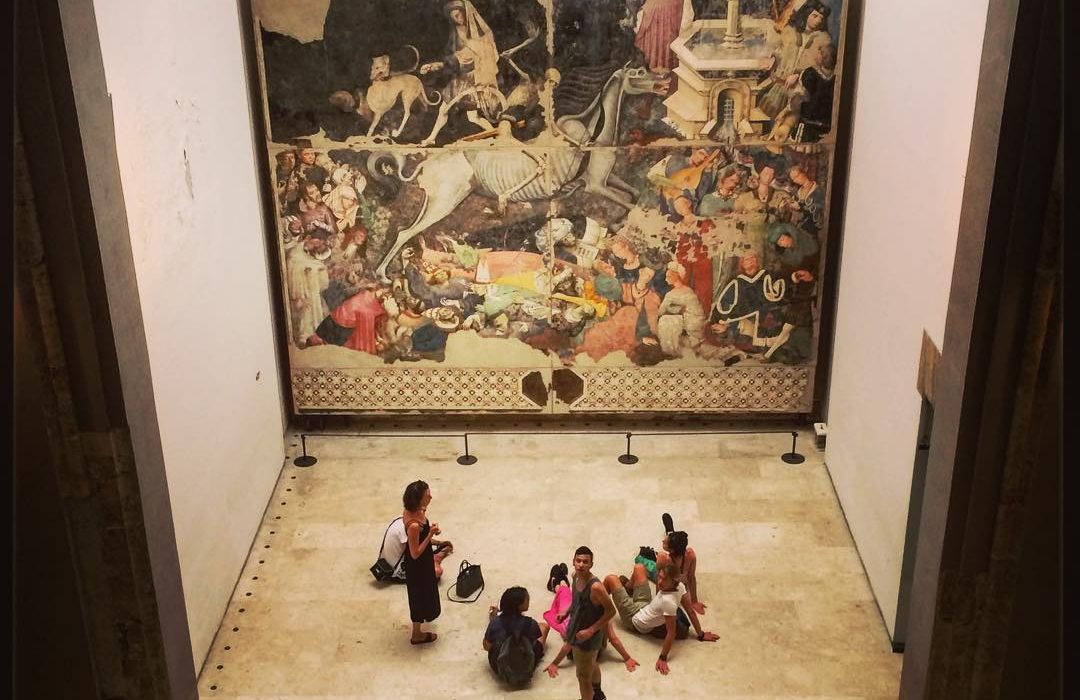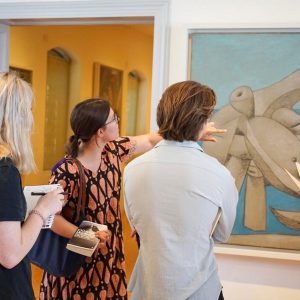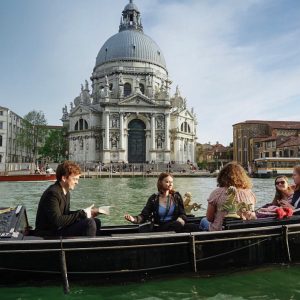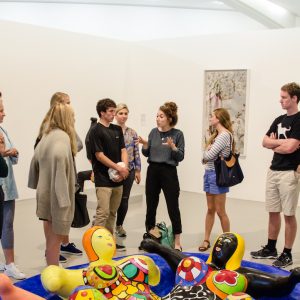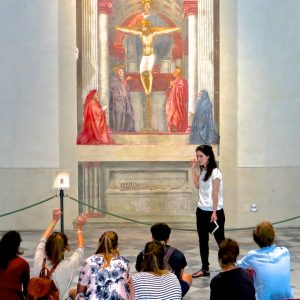Director, Nick Ross, explains the why our AHA tutors have a very specific role.
A tutor helps a student with their studies and the development of their ideas in situations outside a classroom, either individually or in small groups. It is this distinct role of the tutor that we celebrate and support at AHA.
All study with AHA is wherever significant art might be found, whether in churches, palaces, and galleries, or out in the busy streets, encountered in small tutor groups of 9 or fewer and with individual tutorials periodically spaced throughout AHA’s gap year courses. A teacher, on the other hand, speaks in a classroom, a lecturer in a lecture hall – to lecture is to declaim rather than discuss. At AHA our tutors know the value of dialogue in cultivating the minds of their charges, and are able to offer this in an intensive way that is rarely available today, even at university.
This is why we get comments like this, from our anonymous feedback forms following the recently returned 6-week Early Summer Gap Year course:
- ‘Love the tutors; every single one was exceptional, so brilliant and sweet, some of the best I’ve ever had’
- ‘The tutors were all friendly, kind and wonderful – they helped make the trip extremely enjoyable and fun’
- ‘All lovely and inspiring in so many different ways’
- ‘Loved all of them so much, some of the best people we have ever met’
For some, it is desperately important to be taught by the best in the field, the expert on any given subject. However, I am always doubtful of a student who tells me by whom they were taught before they can tell me what they understand by Titian, or what they think about a city like Naples – things they have seen for themselves.
A tutor’s role is less obvious than kudos.
A tutor should be someone to whom a student can talk, enthusing or arguing, and in front of whom they are happy to make mistakes and to laugh. This is why we have always looked for young, clever tutors, who wear their academic laurels with easy grace, forever prioritising their students’ passions and needs. We look for tutors for whom the subject of art history is overwhelmingly important, who have the vim to impart with enthusiasm without intellectual vanity.
Much is said, especially these days, about the pressures of education and the stresses and strains. To me that sounds reasonable – there is so much more to know and the pressures of the syllabus and prescriptive marking schedules allow little let-up for teachers to enjoy their subject with their students at school. This should not stop one from having fun with one’s mind, and a good tutor has the opportunity on AHA to do just that, particularly through experiencing the thrill of the arts at first hand.
Art history offers a discipline which strays into almost every subject if you allow it, and conversely one can enter the subject from any point on the compass rose of academia. The aim is to love knowledge and to enjoy learning for the fun of it.
‘Work is not an end in itself. Leisure is. It is the end, the goal of human life. The pursuit of leisure is not a trivial thing and nothing to do with idleness, but rather, Life lived to its fullest.’
The nineteenth century Jesuit Priest Cyril Barnett said this and he rather hits the nail on the head for us all at AHA, and for our students. Robert Woodward, who was an inspiring educational entrepreneur and who did so much to found AHA, asked that this be quoted on his order of service at his funeral and we try to live up to this ideal daily.

